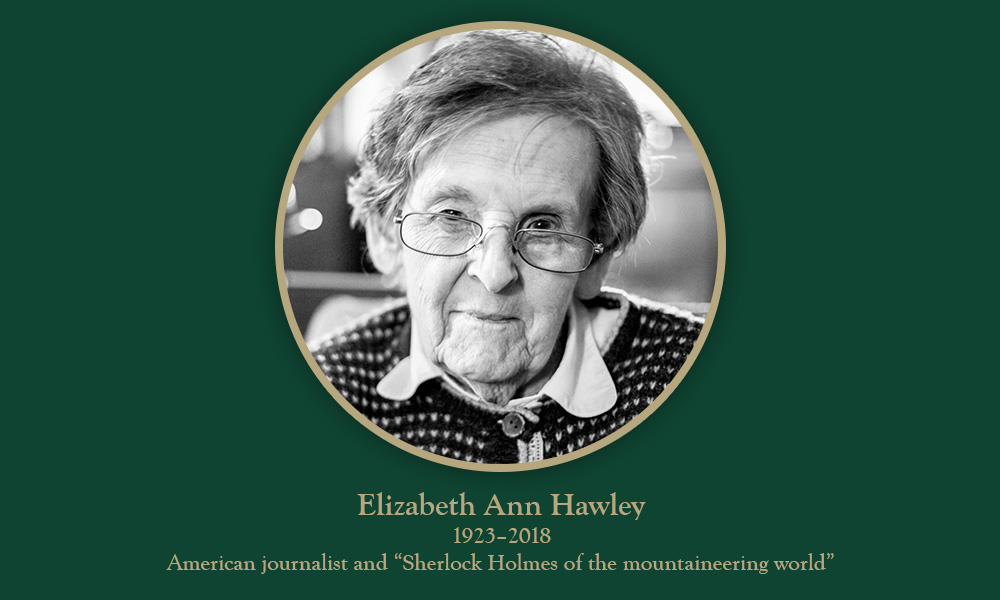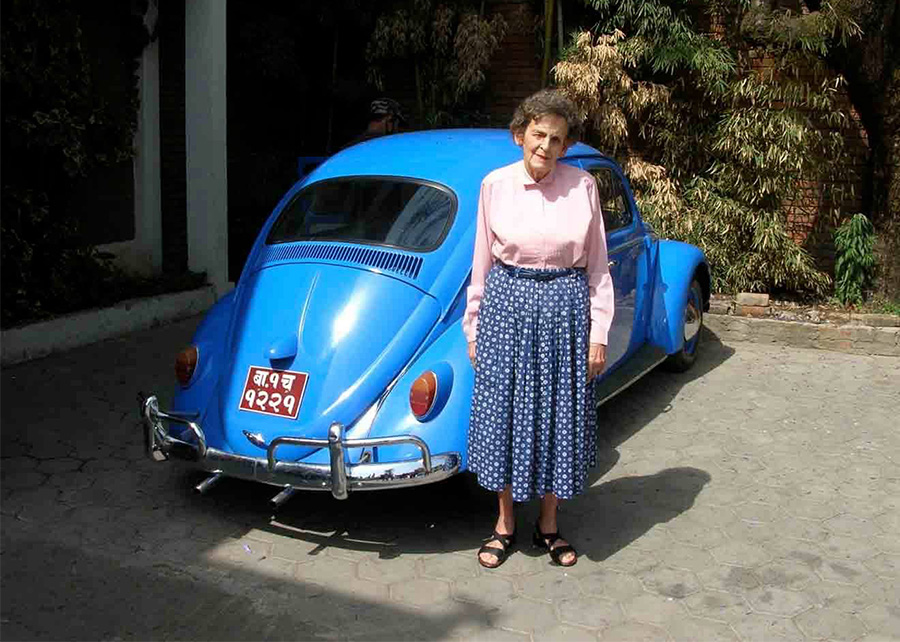
Old is Gold: Elizabeth Hawley
On 26 January 2018, The New York Times reported, “Elizabeth Ann Hawley, an American journalist who chronicled Mount Everest expeditions for more than 50 years and whose attention to detail and sharp sense of humor inspired fear and respect among climbers, died on Friday in Kathmandu, Nepal. She was 94.”
Described over the course of her lifetime as a “living archive”, “first-class journalist” and “a bit of a terror” – the latter by her close friend, Sir Edmund Hillary – Hawley was “a diminutive figure of slight build with a keen look” who committed a significant part of her life to putting together records that constitute the foundation of the Himalayan Database, “a compilation of records for all expeditions that have climbed in the Nepal Himalaya” that is “trusted by mountaineers, newswires, scholars, and climbing publications worldwide”. (Himalayandatabase.com)
Today, this impressive database, which details every expedition between 1905 and 2018, has over 10 000 expedition records – each one includes “dates, routes, camps, use of supplemental oxygen, successes, deaths and accidents” – and more than 74 500 member records. (Himalayandatabase.com)
Born in Chicago, Illinois in 1923, Hawley graduated with an honours degree in English from the University of Michigan in 1946, before accepting a position as a researcher and reporter for Fortune magazine in New York. In 1957, while on a two-year round-the-world trip, she visited Nepal and was so taken with the country that she returned in 1960 as a correspondent for Time.
Over the next few years, Hawley met and wrote about several important figures, including high-ranking Nepalese politicians and royalty. And yet, it was her coverage of the mountaineering stories, including the 1963 the American Mount Everest Expedition, that sparked her interest and determined her path.
In a tribute entitled, Elizabeth Hawley Remembered, her biographer, Bernadette McDonald, describes how Hawley “motored around town in her baby blue Volkswagen Beetle, tracking down expedition leaders in order to learn of their plans or to document what they did or didn’t accomplish in the mountains. She became skilled at sleuthing the truth about climbs, and she rarely erred. Climbers trembled in fear of this alpine detective’s prodding questions. “I don’t mean to frighten people,” she said, but then she added that a little fear might help in ferreting out the facts. She could appear brittle and hard-nosed, but she wrangled the biggest egos in Himalayan climbing into submission. Many of them became her dearest friends.”

Besides the respect that Hawley garnered from the international climbing community (interestingly, she herself never climbed a mountain) and having Peak Hawley in Nepal named for her, she was also honoured with several important awards. These included the King Albert I Memorial Foundation Medal for services to mountaineering (1998), the Queen’s Service Medal in recognition of 20 years of service as New Zealand’s Honorary Consul in Nepal and the Sagarmatha National Award from the Government of Nepal – Hawley was the first ever recipient of this award.
In 2012, Bernadette McDonald released Hawley’s biography, I’ll Call you in Kathmandu, with a foreword by Sir Edmund Hillary, who wrote about the book:
“No one has a wider knowledge of Himalayan mountaineering [than Elizabeth Hawley]. She is respected and admired by all the famous climbers . . . I am particularly pleased that her unique and eventful life has finally been documented, as she has lived through interesting times, in fascinating places, with some remarkable people. May she long remain her very special, formidable self.” (Amazon.com)
Hawley finally retired in 2016 aged 92.
Sources:
Alpinist.com
Himalayandatabase.com
Nytimes.com
Wikipedia



